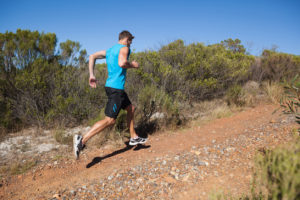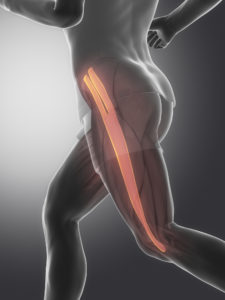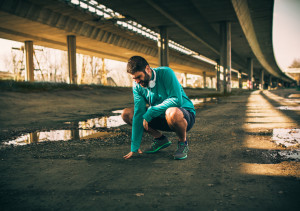“I want you to run naked”
I was talking to a fellow coach recently, when he brought it up that he did quite a bit of naked running.
Safe to say, I was skeptical.
I mean, I couldn’t picture him getting more than a few hundred yards down the road before getting lifted by the Police.
So I asked – “Do you do it on the treadmill at home?”
He looked at me like I was mental and replied, “No, what would be the point? You know there’s loads of great trails here. I lock the front door and stick the key under a brick as normal and head off”
Now before you think he’d lost his mind. And, maybe wondering how he’d avoided going to jail, he wasn’t talking about not wearing any clothes.
What my pal meant by ‘naked running’ was leaving your GPS watch at home when you head out for your run.
And I’ve got to say…
Now that I’ve tried it, and ran ‘naked’ regularly — it’s liberating.
Perhaps more so than running with no clothes on. (Though I haven’t tried that.)
Here’s the thing …
We are so conditioned to track everything, it can take the joy away from running.
When I did cross country back in PE classes at school, you just ran. No watches, no heart rate monitors.
Just kit on, and around the route the teacher told you to do.
Since 1999, and the launch of the Casio ProTrek, we’ve become tied to the idea of knowing every little stat about our running.
Obviously, this does have some amazing benefits.
But at the same time, you become reliant on it.
Losing touch with being able to run purely by feel.
Something that is vital if you’re chasing after a PB.
And running by how you feel is what naked running is about.
Once you ditch the watch it’s so much easier to listen to what your body is telling you.
For instance…
If you’ve had a busy week, hitting a certain pace might be pretty hard.
With no watch telling you you’re going too slow, you’re forced to run by feel.
You have to listen to your breathing, and whether or not you’re straining when you should be going easy.
The big benefit from naked running comes when you put your watch back on.
Because that’s when you can listen to your body and the signals it’s sending you… without checking your watch every 30 seconds.
You won’t need to.
You’ll know if you’re on pace by how you feel.
And you can review things when you finish.
Because, like I said, the tech isn’t evil, you just need to stop relying on it.
So my challenge to you is to leave your watch at home once a week.
Learn to listen to what your body is telling you and reap the benefits.




